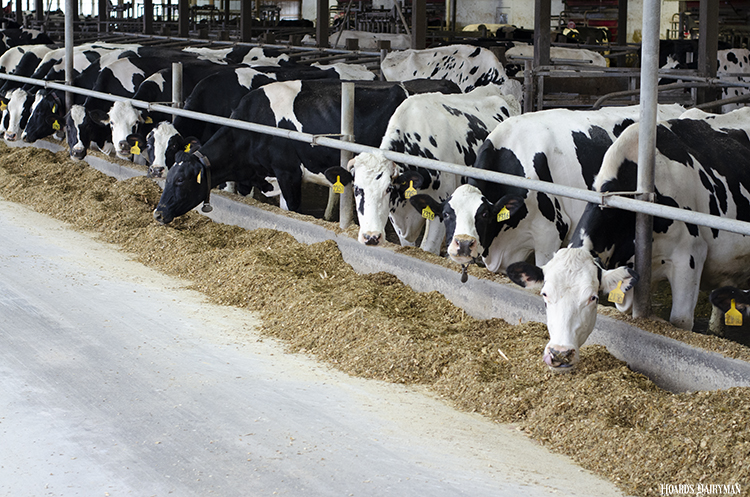
The Animal Genomics and Improvement Lab works collaboratively with the Council on Dairy Cattle Breeding (CDCB) to confirm the genetic evaluations of the U.S. cow herd three times per year. The publicly available results act as a resource to help dairy producers select the ideal sires for their herd.
Genetic evaluations are a foundation
Dairy evaluations began in 1908 with the leadership and foresight of a Denmark researcher in the Bureau of Animal Industry. The dairy industry pools data provided through milk testing, breed associations, and on-farm software. After 115 years, the dataset now contains 100 million lactation records, genotypes from nearly 7 million animals, and 90 million pedigrees.
This has allowed the dairy industry to track the high-level overview of trends in the dairy industry. Miles explained, “Other industries without this magnitude of data access lack that type of insight.”
To ensure the accuracy of the genomic evaluations, geneticists track measurable changes in production such as milk, components, fertility, and livability in addition to phenotypic traits assessed by a type appraiser.
Embryo transfer in progressive herds
Many herds are using aggressive selection programs that include flushing embryos from top 1% to 2%, putting them into mid-level cows, and breeding the bottom 60% to beef. While the exact pattern may vary, generally this is becoming an increasingly common trend,” Miles explained.
Data documenting these embryo transfers are not being captured in the genetic evaluations. “We applied an edit for calves born by ET in the dataset since there appears to be a stop-gap of information transfer to the dairy records processing centers, our conduit to the data,” she continued.
This identifies and removes herds generating the largest amount of bias in the dataset while preserving the maximum amount of information. Miles encouraged producers who use a high percentage of ET in their operation to not be shy about advocating for the needs of their herd. Communicate with herd software companies and your dairy records processing center about obstacles preventing your fertility data from reaching USDA, and in turn, from providing enhanced fertility solutions from a breeding and genetics perspective to your herd.
How does this impact young sires?
Dairy producers commonly integrate young sires into their breeding programs, following improved reliability of genomic testing. However, sires with fewer daughter records add to the database bias.
“We found some of the bulls with the biggest changes in Predicted Transmitting Ability (PTAs) following the ET edit were the young sires.” Miles assured. “We’ve hand checked bulls with the biggest changes from December 2021 (the evaluation prior to the edit) with April, August, and December of 2022 and found the PTAs stabilized and the reliability improved.”
When hypothesizing why young sires harbor the brunt of edit changes, Miles described a possible procedural effect at the stud level. “It could be a policy of the A.I. companies to restrict new young bulls to ET only, keeping the genetic asset in-house.” Since young sires have fewer daughter records, they would have a higher edit rate than those with records.
Selecting the right sires for your breeding program
CDCB is a resource for all farms to explore to find the most appropriate sires for your herd. Every dairy is uniquely different. “I really believe in personalizing the dairy producer’s management plan — you know your cows better than anyone else, you know what system works best for you.” Miles encouraged. “I’m not here to tell you if you should or should not use a specific index for your herd.”
However, she highly recommended that dairy producers with research ideas that would advance their breeding program forward reach out so USDA-ARS can provide solutions for our industry.
For day-to-day breeding decisions, Miles recommended that dairies work closely with the genetics services team from your stud of choice to help advance your operation.
To learn more about this topic, listen to "Dairy Science Digest" on your favorite podcast platform.








